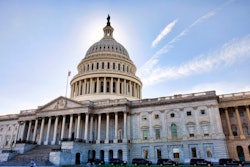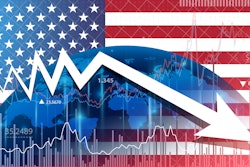
The fluctuating oil markets and ensuing volatility of fuel prices are a thorn in the side of retailers, food and beverage distributors, carriers and logistics providers alike. With analysts predicting China's easing of its zero-COVID-19 policy will push oil prices to $100 a barrel, distribution companies are bracing themselves for another surge in fuel costs. Meanwhile, recent fuel prices have tumbled from the dizzying heights of June 2022 and the U.S. Treasury Secretary, Janet Yellen, has forecast a substantial reduction in U.S. inflation in 2023. In the wake of this rollercoaster ride, transportation companies must find ways to mitigate the impact of unstable fuel costs on their bottom line.
The good news is that there are several actions logistics-oriented companies can take—that don’t require major financial investment—to steady the wild swings of fuel prices. These strategies help improve the efficiency and cost-effectiveness of delivery operations, driving fiscal and operational benefits regardless of whether fuel costs are spiking, dipping or holding steady.
1. Consider a fuel cost surcharge
Surcharges for incremental fuel costs can be used as a tool to renegotiate existing contracts or when drawing up agreements with new customers. While companies may experience some pushback from customers, negotiating even a minor percentage surcharge can have a major impact on reducing transportation costs.
2. Implement dynamic delivery pricing
Dynamic delivery pricing enables customers to choose between premium delivery times or slower, lower-cost delivery options. Some customers will be willing to accept slower deliveries if it keeps their costs low. By delaying shipments in order to consolidate multiple orders from the same customer, or from several customers in the same geographical region, transportation companies can maximize delivery density and minimize distance traveled to increase route efficiency and reduce fuel consumption. For those companies using automated route planning, optimizing parameters to prioritize slower modes and shorter distances will increase the productivity of delivery operations, driving down fuel costs and minimizing driver hours.
3. Focus on driving abilities and performance
In order to curtail fuel expenses, distribution companies need to hone the skills and performance of their drivers with the aim of reducing the amount of fuel each trip takes. By encouraging drivers to decrease their speed, reduce idling times and avoid off-route driving, fuel consumption can be reduced dramatically.
4. Improve vehicle performance
To help reduce fuel consumption of their fleet, distribution companies should schedule routine vehicle inspections to ensure tires are properly inflated and engines are in peak operational condition. For companies already using a telematics solution, they can monitor both the health of the vehicle and driver behavior. This data prompts early identification of declining vehicle performance and facilitates driver coaching to help drivers reduce fuel consumption, enhancing fleet performance and increasing the efficiency of delivery operations as a whole.
5. Collaborate with carriers and customers
Unstable fuel costs present an excellent opportunity to collaborate with other members of the supply chain. Retailers, logistics providers and food and beverage distributors can use carrier and customer feedback to establish procedures, guidelines and operating parameters that minimize collective fuel consumption and mitigate the effects of unpredictable fuel costs for all parties.
6. Evaluate fuel surcharges introduced by carriers
Food and beverage companies and third-party logistics providers (3PLs) should make sure any surcharges implemented by carriers are driven by the carrier’s own increased fuel costs. Incremental fuel surcharges may be applicable when the cost of fuel is at peak levels but less appropriate when/if prices decline. Carriers should be able to provide details and justification for the proposed increases.
7. Re-bid carrier contracts
Given that existing carrier contracts may have been written when fuel prices were much lower or less volatile, food and beverage companies and 3PLs should take the opportunity to revisit carrier contracts with a focus on fuel cost reduction. Softness in various modes of transportation and geographies presents an ideal opportunity to rebid contracts.
8. Prioritize eco-friendly delivery options
Environmental impact is becoming an increasingly important factor in purchase decisions. Eco-friendly delivery options reduce fuel consumption and decrease transportation costs, while shrinking the delivery carbon footprint and building customer loyalty by demonstrating a commitment to the environment. Everyone wins.
9. Steer customers and sales to delivery options that promote delivery density
The goal is to accomplish more deliveries in fewer miles. However, customers and sales reps may inadvertently make requests for delivery appointment that increase fuel consumption and decrease fleet efficiency. To combat this issue, distribution companies should provide customers with delivery appointment options that increase delivery density to help reduce distance traveled per stop, boost fuel efficiency and minimize fuel costs.
10. Employ customer stratification
Customer stratification enables customers to be strategically evaluated against the revenue generated and the cost to service them. Armed with this data, distribution-focused companies can map existing and new customers into a more cost-effective delivery strategy.
Looking ahead
2022 has been a year of wild fluctuations for fuel prices, driven by a range of global factors—from the Russia-Ukraine conflict, OPEC slashing output by 2 million barrels per day and Russian price caps to shutdowns at U.S. refineries. As we head into 2023, logistics-focused companies must make strategic and tactical maneuvers to prepare for continued fuel price instability. The good news is that distribution companies in the food and beverage industry have numerous strategies, tactics and tools at their disposal to mitigate the impact of unpredictable fuel costs, today and down the road.


















